Dwarf Baby Tears, scientifically known as Hemianthus callitrichoides, is a popular aquatic plant among fresh water plant.
They are often used in aquariums to create a lush, green foreground, providing both aesthetic appeal and functional benefits for the aquatic environment.
Table of Contents

Dwarf Baby Tears Stats
| Scientific Name: | Hemianthus callitrichoides |
| Common Name: | Dwarf Baby Tears |
| Origin: | Cuba |
| Maximum Height: | Approximately 2 inches |
| Growth Rate: | Slow to moderate, depending on conditions |
| Light Requirements: | High |
| CO2 Requirements: | High |
| Substrate: | Nutrient-rich |
| Ideal Water Parameters: | pH 5.0-7.5, Temperature 70-84°F (21-29°C) |
| Propagation: | Division or cuttings |
Identification and Description of Dwarf Baby Tears
Dwarf Baby Tears are one of the smallest aquatic plants, characterized by their tiny, round leaves that form dense mats over time.
They have delicate, branching stems that sprout from a creeping root system. These plants typically grow horizontally, adhering to the substrate in your tank, and can reach up to about two inches in height.
When provided with optimal conditions, Dwarf Baby Tears produce tiny white flowers.
Origin and Natural Habitat
Dwarf Baby Tears have adapted to a range of conditions in their natural habitat, which includes both wet and dry periods.
They provide shelter and breeding ground for small aquatic creatures and help in oxygenating the water, promoting a healthier environment for fish.
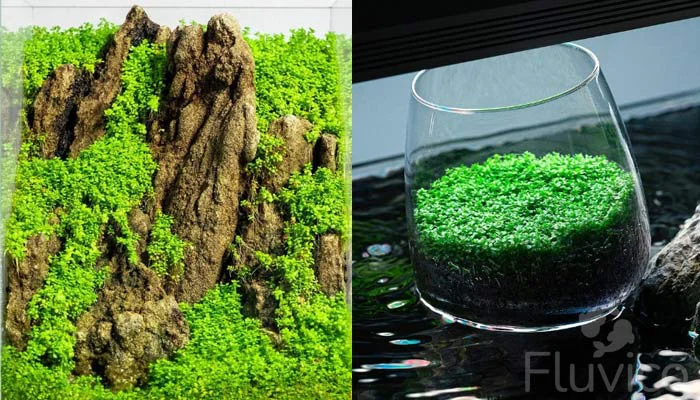
Preparing Your Tank for Dwarf Baby Tears
Tank Requirements
Dwarf Baby Tears can be grown in various tank sizes, but a larger surface area facilitates faster and more extensive carpeting. A minimum of 10 gallons is often recommended to provide ample space for the plant to spread.
Water Type, Temperature, Hardness, and pH
- Water Type: Soft to moderately hard freshwater is ideal
- Temperature: These plants thrive in temperatures between 70-84°F (21-29°C).
- Hardness: Dwarf Baby Tears prefer a general hardness (GH) of 3-10 dGH.
- pH: The ideal pH range slightly acidic to neutral, between 5.0-7.5.
Lighting
- Light Intensity: Require high-intensity light, about 2-3 watts per gallon, for optimal growth. Ensure consistent lighting for 10-12 hours each day.
- Full-Spectrum Lighting: Use full-spectrum light bulbs, ideally in the range of 5000-7000K (Kelvin), to mimic natural sunlight and promote healthy growth.
- Light Placement: Position your lighting source in a way that ensures light reaches the bottom of the tank, where Dwarf Baby Tears are typically planted.
- Potential Issues: Excessive light without sufficient CO2 and nutrient supplementation can lead to algae growth. Adjust light intensity, duration, or balance CO2 and nutrients if you notice this problem.
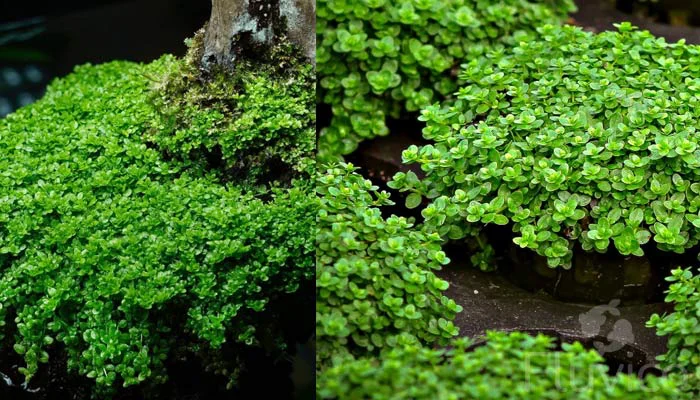
Substrate and Supplements
Substrate:
- Require a nutrient-rich substrate for optimal growth.
- A fine-grained substrate is recommended as it allows for easier root penetration.
- Commercial aquatic soil or aqua-soil, often used for planted aquariums, works well for Dwarf Baby Tears.
- The substrate layer should ideally be about 2-3 inches deep to accommodate root growth and hold the plant in place.
Supplements:
- Regular supplementation with essential macro-nutrients like nitrogen, phosphorus, and potassium is crucial for the plant’s health.
- Micro-nutrients such as iron can also be supplemented to support vibrant growth.
- High levels of CO2 are needed, with levels between 20-30 ppm recommended. Consider a CO2 injection system for your tank.
- Monitor nutrient levels in the tank regularly to ensure they are within the optimal range. Adjust as necessary to avoid nutrient deficiencies.
Planting and Growing Dwarf Baby Tears
How to Plant Dwarf Baby Tears
Planting Dwarf Baby Tears in your aquarium requires patience and attention to detail due to their delicate nature. Here’s a step-by-step guide to help you plant them:
- Prepare the Plant: Dwarf Baby Tears typically come in pots or as tissue cultures. Carefully remove them from the pot and wash off any attached gel or rock wool. This step ensures that you get rid of any possible contaminants that could affect your aquarium’s health.
- Divide the Plant: Dwarf Baby Tears grow more efficiently when planted in small portions. After washing, gently divide the plant into several small portions or clumps.
- Prepare the Tank: Fill your aquarium with a nutrient-rich substrate, making sure it’s around 2-3 inches deep. Slope the substrate higher at the back to create depth.
- Plant Dwarf Baby Tears: Use tweezers to plant each small clump into the substrate. Ensure each portion is spaced about 1-2 inches apart to allow room for growth and spreading. Push each clump into the substrate until only the top of the plant is visible.
- Add Water: Slowly add water into the tank until it is just above the level of the substrate. Be careful not to dislodge the newly planted plants.
- Lighting and CO2: Once planted, ensure the tank has high intensity, full-spectrum lighting and adequate CO2 supplementation. These are crucial for the growth.
- Maintenance: Trim the plant regularly to promote horizontal growth and a lush carpet look. Keep an eye on CO2 and nutrient levels to ensure they are within optimal range.
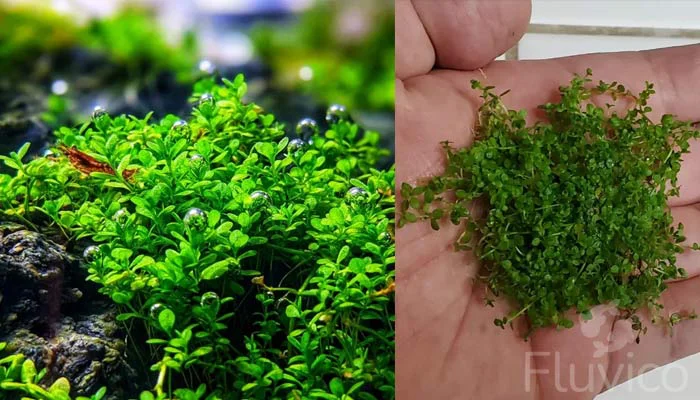
Growing Dwarf Baby Tears on Driftwood and Rock
Growing on driftwood and rocks in your aquarium can create an impressive and natural-looking aquascape. Here are the steps to do it:
- Prepare the Plant: As with planting in substrate, you need to start by removing the Dwarf Baby Tears from their original container. Carefully clean off any rock wool or gel that may be stuck to the roots.
- Prepare the Driftwood/Rock: Make sure your chosen driftwood or rock is clean and safe for use in your aquarium. If you’re using driftwood, it’s often recommended to soak or boil it first to remove tannins and any possible hitchhikers.
- Attach the Plant: Cut a piece of fishing line, cotton thread, or use a plant-specific glue. Place the plant on the driftwood or rock and gently but securely tie or glue it down. If you’re tying the plant, make sure not to tie it too tightly as this can damage the plant. The thread or line should just be secure enough to hold the plant in place.
- Place in the Tank: Carefully place the rock or driftwood with the attached plant into your tank. Make sure it’s secure and won’t easily topple over.
- Provide Care: Provide your plant with ample lighting, CO2, and nutrients for healthy growth. High intensity, full-spectrum lighting is important for growth and maintaining the vibrant green color.
- Wait: Over time: The roots of the Dwarf Baby Tears will attach themselves naturally to the rock or driftwood. If you used a biodegradable thread, it would decompose naturally. If you used fishing line, you might want to remove it once the plant is firmly attached.
The Dry Start Method
The Dry Start Method (DSM) is a popular technique used in the aquascaping hobby, especially when working with carpeting plants like Dwarf Baby Tears. It involves growing plants emersed (partially out of water) before filling the tank with water.
This method can help establish a healthy, thick carpet more easily and quickly compared to starting with a fully submerged setup. Here’s a step-by-step guide to using the Dry Start Method with Dwarf Baby Tears:
- Prepare the Tank and Substrate: Start by laying a nutrient-rich substrate in your clean aquarium. Slope it higher at the back to give an illusion of depth.
- Plant Dwarf Baby Tears: Next, plant small clumps of Dwarf Baby Tears into the substrate, similar to the traditional planting method. Make sure they are spaced apart to allow for growth and spreading.
- Moisture: Add water to the tank, but only until it reaches the top of the substrate. The goal is to keep the environment humid, not submerged.
- Cover the Tank: Cover the aquarium with a lid or plastic wrap to maintain high humidity inside. This mimics the wet environment these plants would naturally grow in, encouraging growth and root development.
- Lighting: Provide the tank with high intensity, full-spectrum lighting for about 10-12 hours each day to support photosynthesis.
- Maintenance: Monitor the tank daily to ensure the substrate remains moist. It’s also crucial to allow some fresh air into the tank regularly to prevent mold growth. You can do this by partially lifting the cover for a few minutes each day.
- Flood the Tank: After several weeks, when the Dwarf Baby Tears have formed a solid carpet and the roots have established themselves firmly in the substrate, you can gradually add water to the tank until it is filled. At this point, you should also start providing CO2 and begin regular tank maintenance.
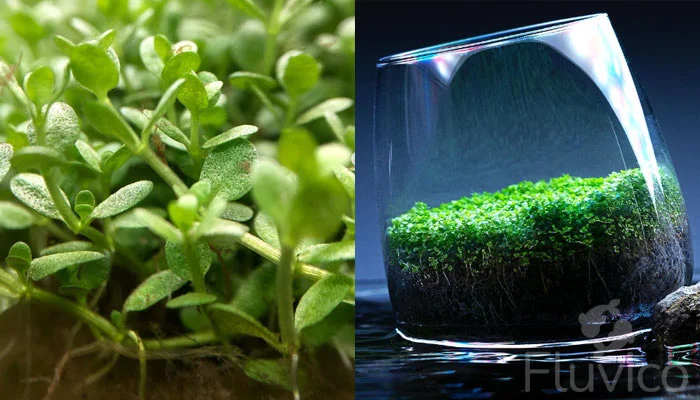
Growing Dwarf Baby Tears Emersed
Growing Dwarf Baby Tears emersed, or partially out of water, can be an effective way to establish a dense carpet before flooding your aquarium, often accomplished using the Dry Start Method (DSM). Here’s how to grow Dwarf Baby Tears emersed:
- Prepare Your Tank: Add a layer of nutrient-rich substrate to your aquarium. This layer should be around 2-3 inches deep to allow for proper root growth.
- Plant Dwarf Baby Tears: Plant small clumps of Dwarf Baby Tears into the substrate, spacing them about 1-2 inches apart. This will encourage the plants to spread and form a carpet.
- Add Water: Add water to the tank until it reaches just above the substrate level. You’re not looking to submerge the plants fully; you’re aiming for a humid, swamp-like environment.
- Cover the Tank: Cover the aquarium with a lid or plastic wrap to maintain the high humidity levels necessary for the emersed growth of Dwarf Baby Tears. The cover will also help prevent the water from evaporating quickly.
- Provide Adequate Lighting: Dwarf Baby Tears require high-intensity lighting for optimal growth. Ensure they receive 10-12 hours of bright, full-spectrum light each day.
- Maintain: Monitor the tank daily. The substrate should stay moist, but not waterlogged. You might need to mist the plants occasionally if they begin to dry out.
- Allow for Ventilation: Even though you need a high humidity environment, it’s essential to allow fresh air to circulate within the tank to prevent mold or mildew growth. Simply lift the cover for a few minutes each day to exchange air.
- Time to Flood: Once you see that the Dwarf Baby Tears have formed a dense carpet and the roots are well-established in the substrate, which can take several weeks to a few months, gradually fill the tank with water. Start CO2 injection and regular tank maintenance at this point.

Maintenance and Care of Dwarf Baby Tears
Trimming
Trimming Dwarf Baby Tears is a crucial part of their maintenance and helps ensure a dense, lush carpeting effect. Here are the steps to follow:
- Observe Growth: Allow Dwarf Baby Tears to grow until they reach a height of around 1-1.5 inches. Watch for any signs of vertical shoots, which can lead to a less dense carpet.
- Choose Tools: Use a pair of sharp aqua scaping scissors for trimming. Curved scissors can be particularly helpful in reaching different areas of the carpet without disturbing other elements in the tank.
- Trim Regularly: Regular trimming helps promote lateral growth and keeps the carpet dense. Aim to trim every 2-3 weeks or when the plants reach the desired height.
- Trimming Technique: Cut the plants at an angle to maintain a natural, uneven look that mimics nature. Avoid cutting too close to the substrate to prevent damaging the root system.
- Cleaning Up: After trimming, make sure to remove the cuttings from the water to prevent any decomposition, which could affect water quality. A small net can be useful for this.
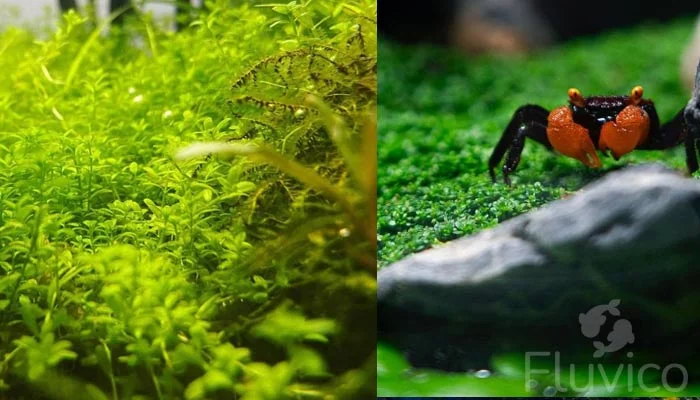
Dwarf Baby Tears Carpet Growth Time
The time it takes for the plant to form a complete carpet in your aquarium can vary greatly depending on several factors including the light intensity, CO2 levels, nutrient availability, and the initial amount of plant material used.
On average, under optimal conditions with high light, plenty of CO2, and nutrient-rich substrate, They can start to form a decent carpet in about 4-6 weeks. However, achieving a full, lush carpet could take several months.
Using the Dry Start Method, where the plants are grown emersed, can speed up this process, and a full carpet can often be achieved in a similar timeframe, before the tank is flooded. Keep in mind, slower growth isn’t necessarily a bad thing.
It allows more time for the roots to establish and can result in a healthier, more robust carpet in the long term. Patience is key when growing a carpet of Dwarf Baby Tears. It may take time, but the end result is worth the wait.
Propagating
- Observe Growth: Allow the Tears to grow and establish a healthy carpet.
- Select a Clump: Choose a dense clump of Tears for propagation.
- Cut: Using a pair of aqua scaping scissors, cut a small portion from the selected clump.
- Replant: Take the cut portion and plant it into the substrate in another part of the tank.
- Care: Ensure that the newly planted portion gets enough light, CO2, and nutrients for healthy growth.
Remember, successful propagation depends on maintaining ideal conditions in the tank. Regular monitoring and maintenance are key to healthy growth and propagation of Dwarf Baby Tears. 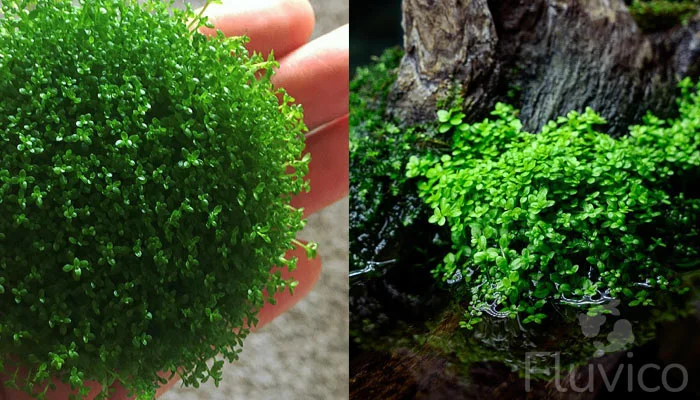
Benefits and Uses of Dwarf Baby Tears
Dwarf Baby Tears, or Hemianthus callitrichoides, offer numerous benefits and uses in an aquarium setting:
- Aesthetic Appeal: Dwarf Baby Tears create a lush, green carpet that significantly enhances the visual appeal of an aquarium.
- Oxygen Production: Like all live plants, they produce oxygen, which is beneficial for your aquarium’s overall ecosystem.
- Nitrate Reduction: They absorb nitrates, helping to maintain the water quality and overall health of the tank.
- Habitat Enhancement: They provide shelter and hiding spaces for small creatures and bottom dwellers in the tank.
- Prevents Algae Growth: By absorbing excess nutrients in the water, Dwarf Baby Tears can help prevent the growth of unwanted algae.
- Versatility: They can be grown on different surfaces including substrate, rocks, and driftwood.
- Enhances Biodiversity: By adding a different plant species to your tank, you increase its biodiversity, which can contribute to a more stable and resilient ecosystem.
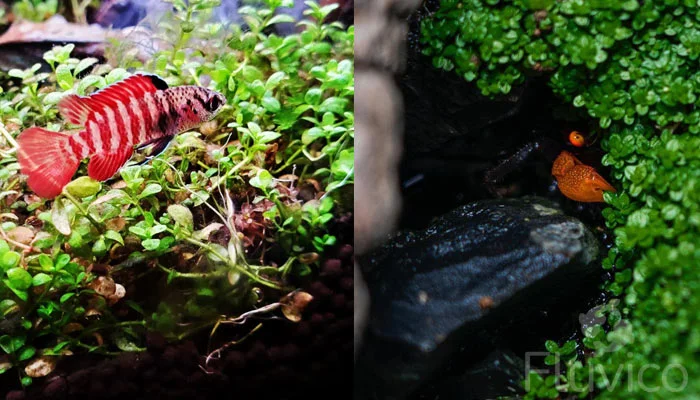
Dwarf Baby Tears and Tank Mates
Choosing the right tank mates can ensure a harmonious aquarium environment. Here are some considerations:
- Compatible Fish Species: Dwarf Baby Tears can share a tank with non-aggressive fish that don’t have a tendency to dig or uproot plants. Suitable species include Neon Tetras, Guppies, and most species of Rasboras and Corydoras.
- Invertebrates: Snails, such as Nerite Snails or Malaysian Trumpet Snails, and shrimp like Cherry Shrimp or Amano Shrimp, are great tank mates. They don’t disturb the plants and help control algae growth.
- Avoid Large, Aggressive Species: Avoid housing with large or aggressive species, like Cichlids or Goldfish, which might damage or uproot the plants.
- Compatible Plants: They can be grown with other plants. Good options include Anubias, Java Fern, and various moss species.
- Avoid Digging Species: Avoid species that like to burrow or dig, such as some types of loaches, as they may disturb the carpet of Tears.
Buying and Quarantining Dwarf Baby Tears
When buying Dwarf Baby Tears, ensure you purchase from a reputable supplier to get healthy, pest-free plants. Look for vibrant green, dense foliage as a sign of good health.
Once purchased, quarantine the plants by placing them in a separate container with aquarium water for a week. During this time, observe for any signs of disease or pests.
Rinse the plants thoroughly before introducing them into your main tank. This quarantine process can help prevent the introduction of diseases or pests into your aquarium.
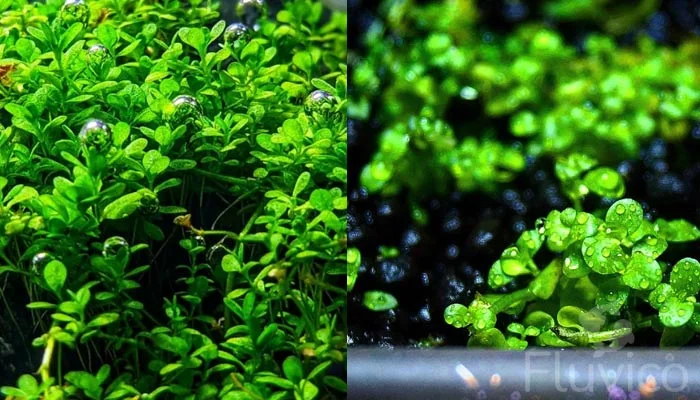
Comparing Dwarf Baby Tears with Other Plants
Dwarf Baby Tears vs. Monte Carlo
Dwarf Baby Tears and Monte Carlo are both popular choices for creating lush carpets in aquariums. However, they have distinct characteristics that set them apart: Dwarf Baby Tears
- They are one of the smallest aquatic plants, making them ideal for creating a dense, lush carpet.
- They require high light and CO2 levels to thrive.
- Require a moderate to high level of care.
- Their tiny leaves give a beautiful, detailed texture to the carpet.
Monte Carlo (Micranthemum tweediei)
- Monte Carlo has slightly larger leaves and a taller growth habit than Dwarf Baby Tears.
- It is more adaptable to varying light conditions and can grow under medium light. It also appreciates CO2 but can grow without it, albeit slower.
- Beginners often find Monte Carlo easier to care for, making it a more suitable choice for their first plant.
- It also creates a dense carpet but with a slightly larger leaf texture.
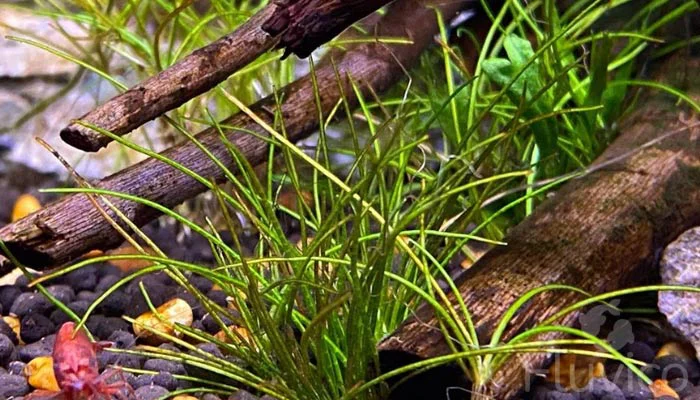
Dwarf Baby Tears vs. Dwarf Hairgrass
Dwarf Baby Tears (Hemianthus callitrichoides)
- Dwarf Baby Tears form a dense, green carpet with tiny, round leaves, creating a moss-like appearance.
- They require high lighting and CO2 supplementation to thrive and form a carpet.
- They’re best suited for experienced aquarists due to their demanding care requirements.
- Dwarf Baby Tears are one of the smallest aquarium plants, offering a unique, detailed texture.
Dwarf Hairgrass (Eleocharis parvula)
- Dwarf Hairgrass grows vertically and resembles a lawn when used as a carpeting plant.
- It can grow in a wider range of conditions than Dwarf Baby Tears, thriving under medium to high lighting and with or without CO2, though it grows best with CO2 supplementation.
- It’s generally easier to care for than Dwarf Baby Tears, making it more suitable for beginners.
- Dwarf Hairgrass provides a different aesthetic with its taller, grass-like strands.
In choosing between the two, consider the look you want to achieve, the conditions of your tank, and your experience level. Both can create stunning, vibrant carpets, but they offer very different aesthetics and care requirements.
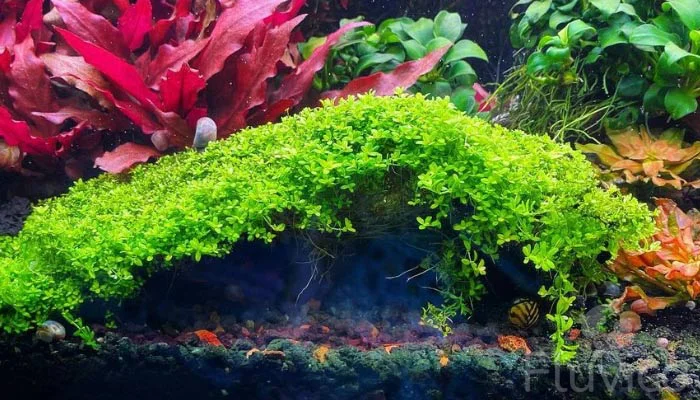
Problems Associated with Dwarf Baby Tears
While Dwarf Baby Tears are a beautiful addition to any aquarium, they can present certain challenges and problems:
- Demanding Light Requirements: Dwarf Baby Tears need high levels of light to thrive. Without it, they may not grow properly or spread to form a carpet. This can be a problem in tanks where light doesn’t evenly reach all areas.
- CO2 Necessity: These plants require a significant amount of CO2 for optimal growth. Without adequate CO2, growth may be stunted and leaves may turn yellow.
- Nutrient Needs: They need nutrient-rich substrates. A deficiency in key nutrients can lead to poor growth or discoloration.
- Difficulty in Planting: Because they’re so small, planting Dwarf Baby Tears can be a meticulous and time-consuming task.
- Risk of Algae: Due to their high light and nutrient requirements, over- or under-doing it can lead to algae growth, which can outcompete Dwarf Baby Tears for resources.
- Melting: When first introduced into a tank, or if water conditions change significantly, Dwarf Baby Tears may ‘melt’, or lose their leaves. They generally recover, but this can be a stress-inducing process.
- Incompatibility with Certain Fish: Some fish, especially larger or bottom-dwelling species, may uproot or damage the plants.
- Time to Carpet: Patience is key with Dwarf Baby Tears. Even with ideal conditions, it can take a while for them to fully carpet an aquarium.
Despite these potential problems, with proper care and attention, Dwarf Baby Tears can form a lush, vibrant carpet that adds depth and beauty to your aquarium.
FAQ
Can dwarf baby tears grow out of water?
Yes, you can cultivate Dwarf Baby Tears out of water using a method known as “emersed” growth. Often, aquarists use the Dry Start Method, growing Dwarf Baby Tears to establish a dense carpet before they fill the aquarium with water.
Is dwarf baby tears hard to grow?
They can be challenging to grow due to their high light, CO2, and nutrient demands. Experienced aquarists, or those willing to invest time and effort, are best suited to maintain the optimal tank conditions.
Will dwarf baby tears grow on driftwood?
Yes, Theycan grow on driftwood. However, it may take some time for them to attach, and they need to be tied down initially with thread or glue until they anchor their roots.
Why is my dwarf baby tears dying?
They may be dying due to insufficient light, inadequate CO2 levels, nutrient deficiencies, unstable water conditions, or being planted too deeply in the substrate. It’s crucial to maintain optimal conditions for their growth and survival.
More Reading

15 Types of Cryptocoryne: Which is Best For Your Aquarium Setup?

16 Awesome Low Light Aquarium Plants (Mosses, Ferns & Stem Plants)


18 Types of Aquarium Moss: Photos, Care, Propagation & Growth Guide
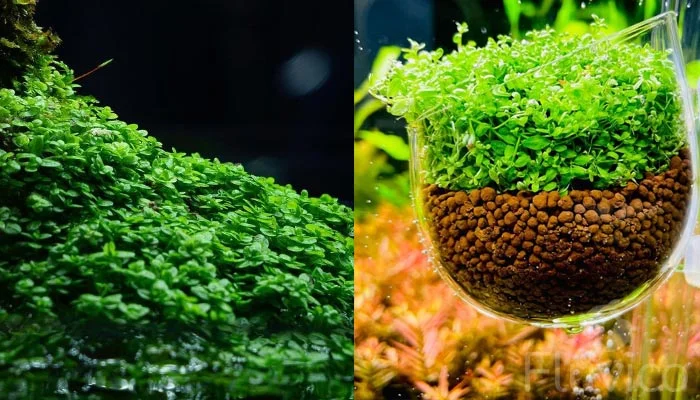
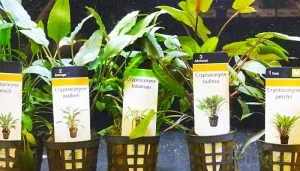
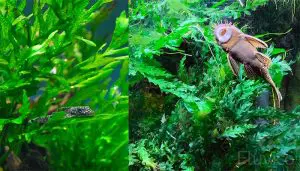
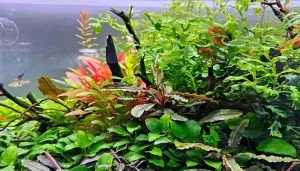
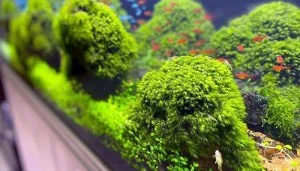
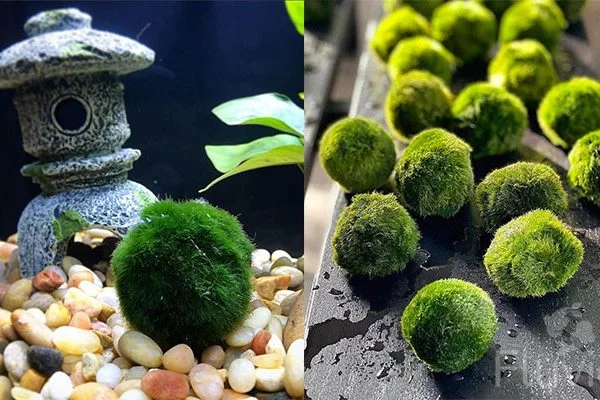

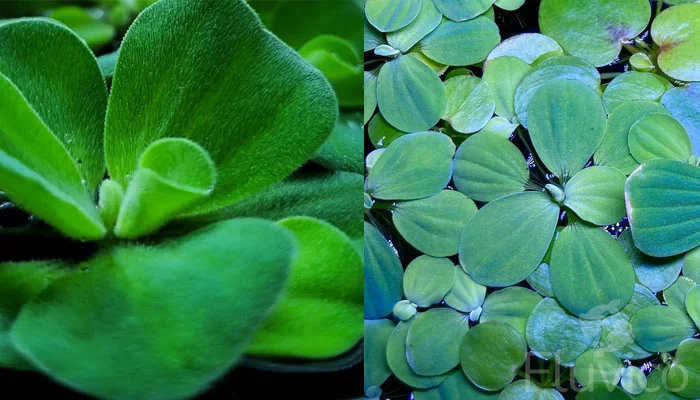
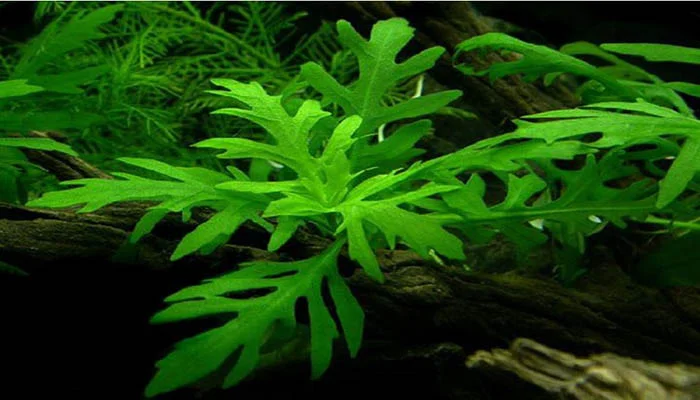
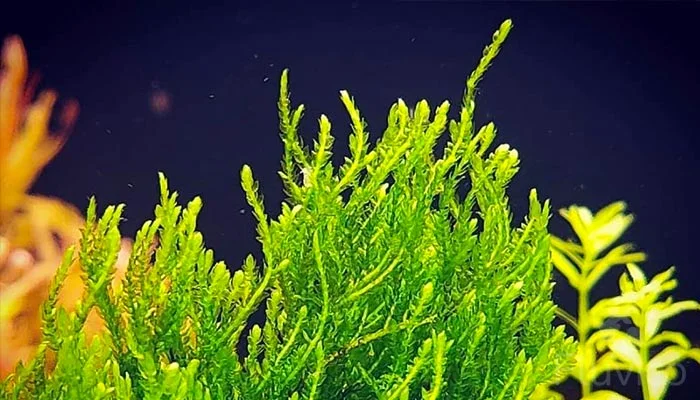
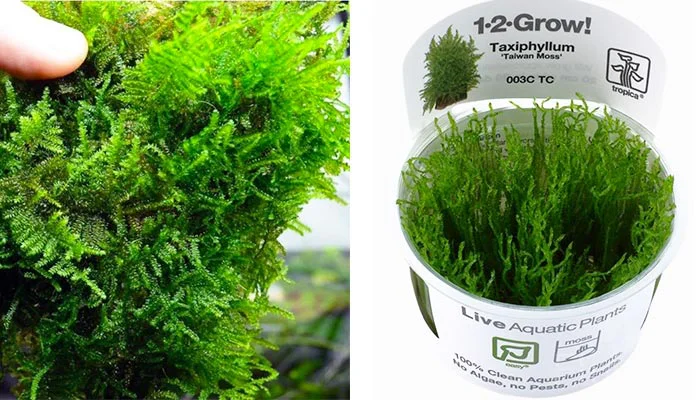
Hope you enjoyed our Dwarf baby tears Care guide!
If you have any questions? Ask away, we’re here to help!
All the best,
Daniel